Division/Section Awards
Take the time to honor and support your friends and colleagues. Be sure to add the Division and Section award winners to your calendar; they are scheduled in various symposia throughout the week.
Division Awards |
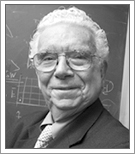
Luminescence and Display Materials Division Centennial Outstanding Achievement Award
Tuesday, Oct. 4 | 0805-0905h | 318 B
An Investigation of New Sources of Visible Light
by B. Di Bartolo
Baldassare Di Bartolo is a Professor of Physics at Boston College, Chestnut Hill. His current research interests include solid state spectroscopy, flash photolysis and molecular spectroscopy, photoacoustics, femtospectroscopy, and nano-spectroscopy.
After extensive education in industrial engineering, Di Bartolo began his career at the Microlambda Company in 1953, where he began his work in the field of microwave components, while simultaneously teaching courses on information theory at the Istituto Universitario Navale. Di Bartolo accepted positions at the Massachusetts Institute of Technology (where he originally served as a Fulbright scholar and a visiting Fellow in the Department of Physics) and the Université Claude Bernard.
Since September 1973, Di Bartolo has been Director of the International School of Atomic and Molecular Spectroscopy of the "Ettore Majorana" International Centre for Scientific Culture; in this capacity he has directed thirty "Summer Schools.”
|
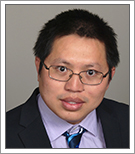
Electrodeposition Division Early Career Investigator Award
Tuesday, Oct. 4 | 0910-0950h | 305 B
Self-terminated Electrodeposition – A New Way for Growing Metal Thin Films
by Y. Liu
Yihua Liu has been working in the interdisciplinary research areas of electrochemistry and materials science since his undergraduate and graduate studies at State University of New York in Binghamton. Joining a team of researchers at Nikolay Dimitrov’s laboratory, he investigated ways of mitigating incorporation of organic additives in copper electrodeposits after demonstrating that their presence could cause void formation at copper-solder joints.
His passion about electrodeposition took him to National Institute of Standards and Technology, where working with Thomas Moffat, they discovered that a century-old electrodeposition method, with a new twist, could be implemented to grow high-quality, ultrathin Pt and Ir films, adding a versatile tool to catalyst design and engineering. Currently, he continues his research in electrodeposition and catalysis at Argonne National Lab.
His works on Pt and Ir electrodeposition have resulted in the filing of two U.S patents. He has published approximately 20 peer-review articles.
|

High Temperature Materials Division Outstanding Achievement Award
Tuesday, Oct. 4 | 1400-1440h | 301 B
A Country Boy Finds Materials Science
by H. U. Anderson
Harlan U. Anderson’s research in insulating and conducting oxides has led to his recognition among the scientific community as one of the world’s leading authorities on electronic ceramics, solid oxide fuel cells, and oxygen separation. In his nearly 40-year teaching career, he has advised more than 70 MS and PhD students. His outstanding work in academia gained him the Curators’ Professor honor in 1988, which is the highest research honor at Missouri University.
Anderson joined the American Ceramic Society in 1978, where he later was named Fellow in 1992, and became Senior Editor of their journal in 1999. The National Institute of Ceramic Engineers selected him to present the Arthur L. Friedberg Memorial Lecture in 2008. He received the John Jeppson Award from ACS in 2014.
Prior to joining the staff at Missouri University in 1970, he held positions at the Sprague Electric Company and the Oregon Graduate Center. Anderson is currently retired and has expanded his lifetime interests in outdoor related activities.
|

Corrosion Division H. H. Uhlig Award
Tuesday, Oct. 4 | 1400-1430h | 328
Electrochemical Modeling of Intergranular Corrosion and Stress-Corrosion Cracking in AA5083-H131
by R. G. Kelly
Robert G. Kelly is the AT&T Professor of Engineering and Co-Director of the Center for Electrochemical Science and Engineering at the University of Virginia. His work currently focuses on atmospheric localized corrosion, localized corrosion in marine Al alloys and multi-scale modeling of corrosion processes.
With his research, he has rendered technical assistance to the Nuclear Regulatory Commission and US Department of Energy concerning the Yucca Mountain Project, the USAF Aging Aircraft Program, NASA Safety and Engineering Center, and the 9/11 Pentagon Memorial design team.
Kelly has co-authored over 100 papers and supervised 20 PhD students as well as 18 MS students. He was selected as a recipient of the 1997 A.B. Campbell Award. He is a Fellow of ECS and NACE International. Kelly has won several teaching awards at the University of Virginia including the All University Teaching Award in 2004.
|
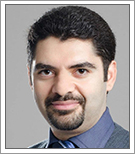
Corrosion Division Morris Cohen Graduate Student Award
Tuesday, Oct. 4 | 1430-1500h | 328
In-situ Monitoring of Ultra-slow Oxide Growth on Copper
by S. Hosseinpour
Saman Hosseinpour was born in Iran where he finished his BA and MA degrees in material science and engineering with the focus on surface science. In 2006, he became a faculty member of the Department of Material Science at Azad University. He has previously worked on the first Iranian telecommunication satellite and in 2008 he received the International Khawrizmi’s Award (the most prestigious scientific award in the Middle East) and Economic Cooperation Organization (ECO) prize for the research and development in the aircraft industry for a project entitled “Honeycomb seals for jet engines.”
In 2009 he moved to Christofer Leygraf’s labs in the Royal Institute of Technology (KTH) in Sweden to work on atmospheric corrosion of copper as a PhD student. After finishing his PhD in 2013 he moved to the Max Planck Institute for Polymer Research in Germany as a postdoc researcher to work with Mischa Bonn and Ellen Backus on molecular aspects of water splitting on TiO2 using pump-probe vibrational sum frequency spectroscopy.
Hosseinpour has presented his research in more than 20 journal papers and scientific conferences and authored three books in the fields of material science, surface engineering, and corrosion.
|

Sensor Division Outstanding Achievement Award
Wednesday, Oct. 5 | 1000-1100h | 306 B
Mixed Potential Sensors for Hydrogen Safety and Automotive Applications
by R. Mukundan
Rangachary Mukundan (Mukund) is a member of the technical staff of the Sensors and Electrochemical Devices Group at Los Alamos National Laboratory (LANL). His research interests include electrochemical gas sensors, fuel cells, and energy storage devices. Currently, he is leading several projects related to sensors and fuel cells funded by the Department of Energy. He was part of a LANL team that was awarded an R&D 100 award in 1999 for the development of sulfur resistant oxygen sensors.
Mukundan’s work on sulfur tolerant anodes for fuel cells was recognized as Scientific American’s Top 50 Science and Technology Achievements for 2003. His work was also recognized by the J.B Wagner Award of the High Temperature Materials Division of ECS in 2005.
He is the co-inventor on 6 U.S. patents and has authored over 125 papers including over 50 in peer-reviewed journals that have been cited over 4000 times. Mukundan is currently the technical editor in the area of Sensors and Measurement Sciences for the Journal of The Electrochemical Society.
|
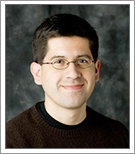
Electrodeposition Division Research Award
Wednesday, Oct. 5 | 1400-1440h | 305 A
Using Liquid Metals for Advanced Electrodepositions
by S. Maldonado
Stephen Maldonado received his BS in chemistry from the University of Iowa in 2001 and a PhD in chemistry from the University of Texas at Austin in 2006. After two years as a postdoctoral fellow at The California Institute of Technology, Maldonado joined the faculty at the University of Michigan, Ann Arbor.
He is a board member of the Society of Electroanalytical Chemistry and received a National Science Foundation CAREER award in 2010. He was named a Sloan Research Fellow and received a Camille Dreyfus Teacher Scholar Award in 2013.
Maldonado’s work on electrodeposition was recognized with a State of Michigan Governor's Award in Green Chemistry in 2014. His group's general research interests focus on electrochemical processes relevant to the fields of electronics and energy conversion/storage.
|
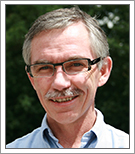
Battery Division Technology Award
Thursday, Oct. 6 | 0900-0940h | 313 C
Some Directions for Performance Improvement of Li-Ion Batteries out of Usual Paths
by D. Guyomard
Dominique Guyomard is Director of Research at France’s Centre National de la Recherche Scientifique and the head of the Electrochemical Energy Storage and Transformation Team (EEST) at the Institut des Materiaux Jean Rouxel at Nantes. This team of approximately 50 scientists and 20 staff researchers gathers activities on batteries, moderate and high temperature fuels cells and electrolysers, and advanced spectroscopies and simulations.
Guyomard’s expertise deals with basic and applied solid state electrochemistry and material and surface science, applied to the fields of Li-ion, Na-ion, Li metal polymer, and Li-S batteries. He serves as expert on energy storage in several national and international academic committees. He belongs to the advisory board of several international symposia, and is co-organizer of several national and international conferences.
He is now President of the International Battery Association (IBA). He is recipient of the 2007 IBA Research Award, the 2008 French Academy of Science Award for Science Transfer to Industry, and the 2010 ECS Battery Division Research Award. He is co-author of more than 220 journal papers and 30 patents.
|
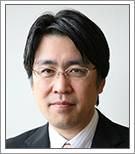
Battery Division Research Award
Thursday, Oct. 6 | 0940-1020h | 313 C
Aqueous Lithium-Air Batteries with Protected Lithium Electrode
by N. Imanishi
Nobuyuki Imanishi is a professor in the Department of Chemistry at Mie University in Japan. His career in industrial electrochemistry began in 1982 as an undergraduate student at Kyoto University, followed by a PhD from his alma mater in 1993.
Imanishi joined Mie University in 1990, where he focuses on functional materials and electrochemistry, especially energy conversion and storage materials such as electrode materials for Li batteries and fuel cells, and solid-state electrolytes for those batteries. His recent research interests include the following two main topics: Li-air batteries and solid polymer Li-ion batteries.
Throughout his career, Imanishi has published more than 300 papers and several book chapters. His research has been recognized by The Electrochemical Society of Japan through the Sano Award and the Award for Young Battery Researchers.
|

Battery Division Research Award
Thursday, Oct. 6 | 1020-1100h | 313 C
Activating Oxygen Chemistry for Energy Storage
by Y. Shao-Horn
Yang Shao-Horn is currently the W.M. Keck Professor of Energy and Professor of Mechanical Engineering, at MIT’s Department of Materials Science and Engineering. Throughout her career, Shao-Horn has focused her research on the chemical physics of surfaces with emphasis on metal oxides, including oxide-solve interface in Li-batteries, descriptors of catalytic activity, wetting properties and ion transport, and design materials and devices for solar fuel including water splitting, carbon dioxide reduction, and metal-oxygen redox chemistry.
Shao-Horn’s research includes experimental components comprising synthesis of well-defined surfaces and nanostructured materials, and investigation of processes at the surfaces/interfaces using (electro) chemical methods coupled with ex situ and in situ X-ray-based and electron-based spectroscopy.
Among her many honors, Shao-Horn has been awarded the ECS Charles Tobias Young Investigator Award, ISE’s Tajima Prize, Gail E. Kendall Professor of Mechanical Engineering, and AAAS Fellow. She has been ranked as a Highly Cited Researcher by Thomson Reuters, with just over 200 journal papers published. Shao-Horn has advised over 70 MS and PhD students.
|
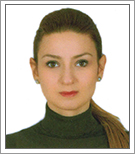
Battery Division Student Research Award
Thursday, Oct. 6 | 1100-1140h | 313 C
Production and Characterization of Si Based Thin Films as Negative Electrodes For Secondary Lithium Ion Batteries
by B. D. Polat Karahan
Billur Deniz Polat Karahan’s academic career has revolved around the research of thin films. Upon obtaining her BA from Istanbul Technical University, Polat Karahan started her PhD at her alma mater in the university’s Advance Technology Program.
During her PhD, she studied for six months at Argonne National Laboratory (ANL) where she produced thin films by electron beam evaporation and magnetron sputtering methods. Under the supervision of ANL’s Khalil Amine, she was able to characterize morphological, structural, and electrochemical performances of these films when used as negative electrodes. Currently, she is working to produce and characterize structured Si based thin film electrodes for LIBs.
Aside from thin films, Polat Karahan has experience in electrochemical coatings, zinc alloy casting, and electrochemical testing methods. She has published 52 papers, 14 magazine articles, and co-authored two international books.
|
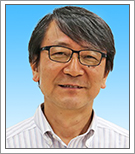
The Max Bredig Award In Molten Salts and Ionic Liquid Chemistry
Thursday, Oct. 6 | 1340-1420h | 323 C
Design and Electrochemical Application of Ionic Liquids Based on an Understanding of Their Nature
by M. Watanabe
Masayoshi Watanabe is currently a professor in Yokohama National University’s Department of Chemistry and Biotechnology. His work mainly concerns ionics and nano-structured materials. His leadership in these fields has led to the realization of key materials for the advancement of electrochemical devices which help support a sustainable society.
Watanabe’s recent research activity has been expanded to nano-structured materials, including block copolymer assembly in ionic liquids. He has published 340 research papers and 190 books and reviews on these topics.
Among his many honors, Watanabe has received The Electrochemical Society of Japan’s (ECSJ) Award for Creative Work and its Takei Award, and Yokohama National University’s Distinguished Research Award. He served as President of the Ionic Liquid Research Association in Japan (2006-2010), Vice President of ESCJ (2012-2014), and Vice President of Japan’s Society of Polymer Science (2014-2016).
|
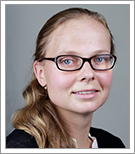
Battery Division Postdoctoral Associate Research Award
Sponsored by MTI Corporation and the
Jiang Family Foundation
Yelena Gorlin holds a BS from the Massachusetts Institute of Technology (with a double major in Chemical Engineering and Biology) and a Ph.D. in Chemical Engineering from Stanford University. Her Ph.D. thesis focused on the development of manganese oxide based catalysts for oxygen electrocatalysis.
Dr. Gorlin is a postdoctoral associate in Prof. Hubert Gasteiger’s laboratory at Technische Universität München. During her postdoctoral appointment, she led projects in two separate research areas: lithium-sulfur batteries and polymer electrolyte membrane fuel cells, with a goal of improving the fundamental understanding of electrochemical processes in these two technologies. Her research employed electrochemistry and synchrotron based X-ray absorption spectroscopy characterization and led to the development of a novel spectro-electrochemical cell for characterization of batteries, identification of the charging mechanism of lithium-sulfur batteries, and identification of a fuel cell anode catalyst’s structure during the hydrogen oxidation reaction.
Dr. Gorlin has co-authored 19 peer-reviewed publications and has been the recipient of multiple awards, including Outstanding Poster at Stanford Synchrotron Radiation Laboratory User Meeting, Alexander von Humboldt Foundation Postdoctoral Fellowship, and the ECS Colin Garfield Fink Summer Postdoctoral Fellowship.
|
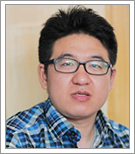
Battery Division Postdoctoral Associate Research Award
Sponsored by MTI Corporation and the
Jiang Family Foundation
Liumin Suo is a postdoctoral research associate within the Ju Li Group at the Massachusetts Institute of Technology. His research interests include, but is not limited to, a focus on rechargeable lithium ion batteries including aqueous and non-aqueous Li ion electrolytes and the interface between electrode and electrolyte.
Dr. Suo earned a BS degree in material physics at China’s Inner Mongolia University of Technology. He proceeded to a MS in material physics and a Ph.D in condensed matter physics from the Institute of Physics, Chinese Academy of Sciences. After receiving his Ph.D, he was a postdoctoral research associate at the University of Maryland, College Park. He is the co-author of more than 25 peer-reviewed journal articles and co-inventor of 8 patents. Recent original contributions include the invention of a novel class of aqueous electrolyte, “Water-in-Salt,” for high voltage rechargeable aqueous Li ion batteries and the proposal of a new class of “Solvent-in-Salt” electrolytes for next-generation high-energy rechargeable metallic lithium batteries.
Dr. Suo’s work on aqueous and non-aqueous electrolytes was recognized with the 2015 University of Maryland Invention of the Year Award and Best Poster Award in the 19th International conference on solid state Ionics a State in 2013.
|
Section Award |
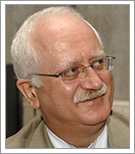
Europe Section Alessandro Volta Medal
Monday, Oct. 3 | 0920h | 322 A
Alzheimer Disease and Oxidative Stress: Thou Shalt not Breathe nor Think!
by C. Amatore
Christian Amatore gave molecular electrochemistry new direction, utilizing new concepts and tools to allow the discipline to overflow its traditional fields to face major problems in organic and inorganic chemistry, organometallic, and even biology. Amatore has had a pioneering role in the development of ultramicroelectrodes worldwide.
His research involves the development of advanced electrochemical methods for investigating extremely complex mechanisms of organic and organometallic chemistry under the very conditions used by synthetic chemists as well as for the study of important biological mechanisms at the single cell level. Amatore’s activity in molecular kinetics is best illustrated by the rationalization of electron transfer catalysis, electron transfer activation of molecules, and more recently, by a thorough series of works relative to the elucidation of the most important mechanistic aspects of catalysis by homogeneous palladium complexes, an extremely active area in today’s catalysis for carbon-carbon bond making in fine chemical industry.
Amatore has received many honors and awards in the scientific community, including France’s CNRS Silver Medal, The Society for Electroanalytical Chemistry’s Reilley Award, and Britain’s RSC Bourke Medal.
|
|
 |
 |
Registration
- - - - - - - - - - - - - - - - - - - - -
Meeting Program
- - - - - - - - - - - - - - - - - - - - -
Important Dates
Abstract Deadline
April 15, 2016
Registration Now Open!
Travel Grants
June 10, 2016
Exhibit & Sponsorships
June 15, 2016
Early-Bird Ends
September 2, 2016
|
|
 |
|